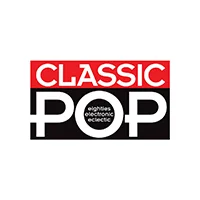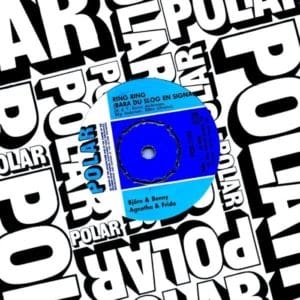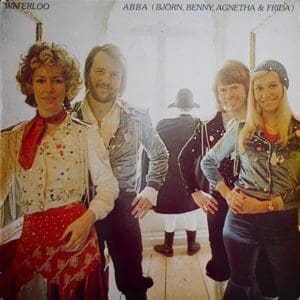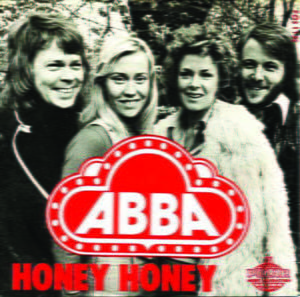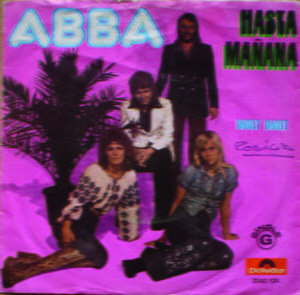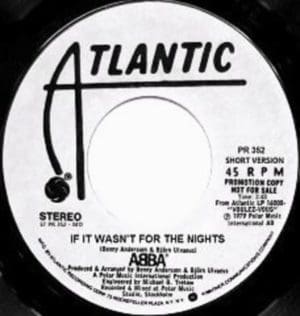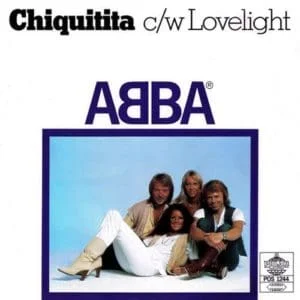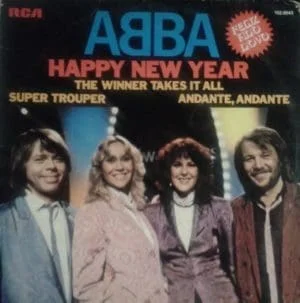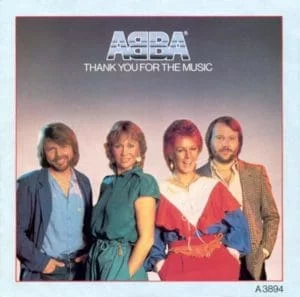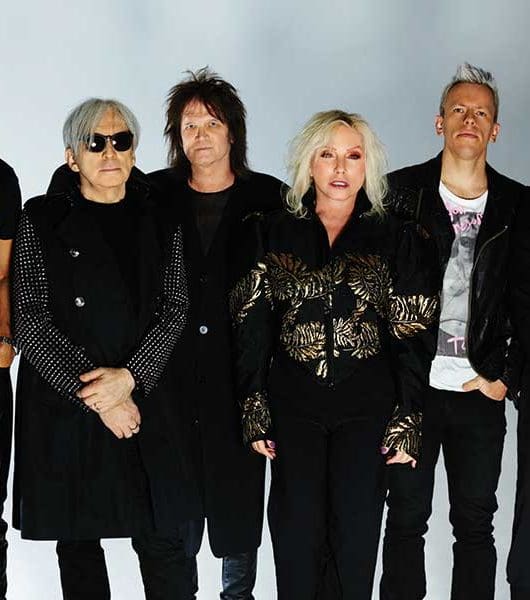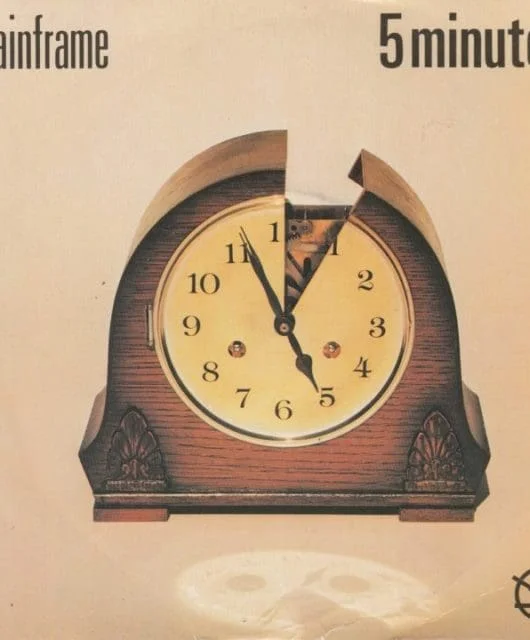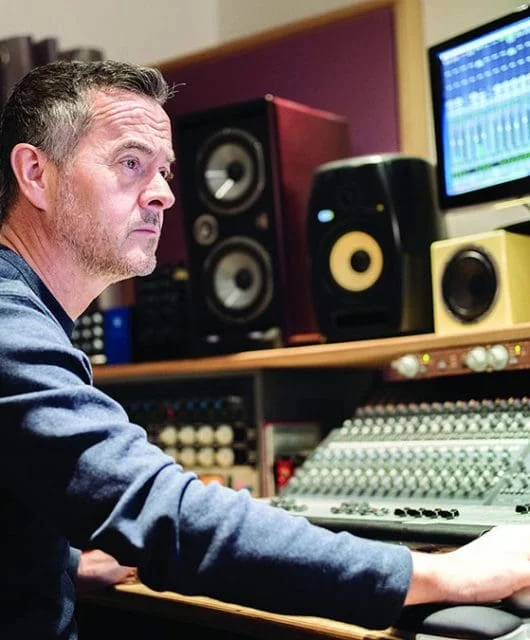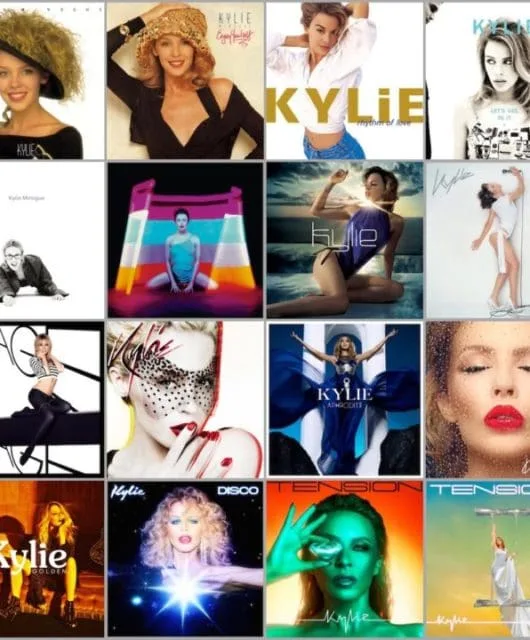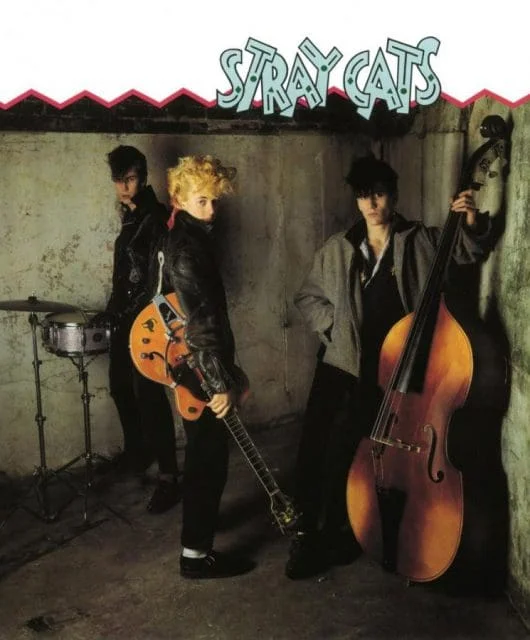Top 40 ABBA songs
By Classic Pop | March 25, 2024
 In our list of the top ABBA songs we count down from 40 to 1… By Ian Ravendale
In our list of the top ABBA songs we count down from 40 to 1… By Ian Ravendale
With their worldwide sales numbering somewhere around an estimated, though difficult to verify, 300-million-plus records worldwide, ABBA are one of the biggest-selling pop bands of all time, putting them in the same bracket as the likes of The Beatles and The Rolling Stones. Like the former, their recording career was relatively short, only spanning nine years.
ABBA’s liking for catchy choruses and flair for melody had its roots in their native Sweden and the early influence on Benny and Björn of the ‘schlager’ music of central and northern Europe, which is informed by Nordic and Slavic folksongs. The Swedish variant of schlager added memorable choruses and pronounced key changes, both of which are present in most ABBA songs.
Timeless Appeal
Winning Eurovision was a jumping-off point and the band quickly progressed, with writers/producers Björn Ulvaeus and Benny Andersson soon playing the recording studio like an instrument. The voices of ABBA, Agnetha Fältskog and Anni-Frid (‘Frida’) Lyngstad had a range of three octaves between them and were given all sorts of complicated vocal parts to sing by Benny and Björn, in what wasn’t their first language.
The timeless appeal of ABBA’s songs, the intricacies of their vocal arrangements, and the inventiveness of the productions have influenced a generation of producers, musicians and songwriters. Benny, Björn, Agnetha and Frida made eight studio albums during the period from 1973 to 1981.
Thank You For The Music
These albums and the many hits compilations are a library of timeless pop songs that transcends fads, fashions, glittery boots, pert bottoms and marriage breakups… When all is said and done, what ABBA are really about is the music. Let’s jump in!
- Read more: ABBA in the studio
40 RING RING, 1973
Written by Benny Andersson, Björn Ulvaeus and ABBA manager Stig Anderson, Ring Ring was originally called Klocklåt (Clock Tune). The trio had been asked to submit a song for consideration for Sweden’s entry into the 1973 Eurovision Song Contest. English lyrics were added by Neil Sedaka and Phil Cody, and the song became Ring Ring. By Melodifestival (the Swedish Eurovision heat), the quartet weren’t yet ABBA and performed as Björn & Benny, Agnetha & Anni-Frid. Agnetha was nine months pregnant and Frida learned Fältskog’s parts along with her own, so they could perform without her if necessary. The judges chose another song to go through to Eurovision, with Ring Ring coming third – to much outcry in the Swedish press. It went on to be a Swedish No. 1. ABBA (as they soon became) had arrived.
Read more: Making ABBA’s Ring Ring
39 WATERLOO, 1974
Instructed by Stig Anderson to write a song for 1974’s Eurovision, Benny and Björn came up with the basic track in Ulvaeus’ holiday cottage on the island of Viggsö. This was then passed on to Stig to write the lyrics. His original title of Honey Pie was quickly jettisoned in favour of Waterloo, which means the same in any language. Eurovision’s requirement for songs to be performed in each countries’ native language had recently been lifted, enabling ABBA to perform Sweden’s entry in English. Held in Brighton, Eurovision 1974 was the first time ABBA went to town visually, with glittery outfits designed by Inger Svenneke. Arranger Sven-Olof Walldoff joined in by conducting the orchestra decked out as Napoleon.
Read more: Making ABBA’s Waterloo
38 HONEY HONEY, 1974
The Waterloo album reveals an ABBA who still hadn’t quite worked out what sort of band they were. Half the songs were clichéd rockers sung by Björn or Benny and don’t sound much like the ABBA everyone knows. Much more in the ABBA ‘schlager’ style of the time, Honey Honey was one of the tracks sung by Agnetha and Frida and could have been a Eurovision contender. ATV Music in the UK owned the publishing and, on learning that ABBA weren’t going to release it as a single, put together the Sweet Dreams boy/girl duo to record a cover, which peaked at No. 10 in July 1974. The ABBA original was the follow-up to Waterloo in the US and made No. 27, beating the Sweet Dreams version, which stalled at No. 68.
Read our review of ABBA’s new album Voyage here
37 HASTA MAÑANA, 1974
First included on the Waterloo album and later re-recorded in Spanish for 1980’s Gracias Por La Música album, Hasta Mañana was a close contender for ABBA’s 1974 Eurovision entry. The song was more in line with recent previous winning entries of emotional slow-to-mid-tempo ballads in the European melodic ‘schlager’ style that Eurovision favoured at the time. Lyrics were written by Stig Anderson, who had been on holiday to Las Palmas in the Canary Islands, where the phrase “Hasta mañana!’ (see you tomorrow) was widely used. Hasta Mañana is sung primarily by Agnetha, and it was decided that, bearing in mind the huge exposure offered by Eurovision, Waterloo would be a better vehicle for the quartet.
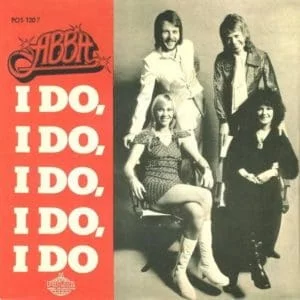
36 I DO I DO I DO I DO I DO, 1975
When I Do I Do I Do I Do I Do began climbing the Australian charts in 1975, Countdown, the Top Of The Pops equivalent, asked RCA Australia whether a clip was available. The programme was rewarded with not just the I Do… video, but also promos for Mamma Mia, Bang-A-Boomerang and SOS. The four videos were shot in April 1975 by Lasse Hallström at the breakneck speed of two a day on a miniscule total budget of 50,000 kronor (£5,500). Australian television had only recently crossed over to full-colour broadcasts and Hallström’s cheap and cheerful treatments received massive exposure, resulting in ABBA becoming the most popular act in Australia.
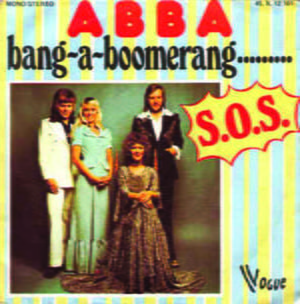
35 BANG-A-BOOMERANG, 1975
This jolly piece of pop was originally recorded as the Swedish entry for 1975’s Eurovision by Swedish duo Svenne & Lotta, who Benny and Björn were producing. Svenne & Lotta were unsuccessful, and their vocals were subsequently taken off the track and replaced by Anni-Frid and Agnetha, with the reworked number ending up on the 1975 ABBA album. Lasse Hallström’s exuberant video shows Benny, Björn, Frida and Agnetha miming furiously by the sea, as comic book imagery (including a no doubt unauthorised appearance by Superman) is cut in whenever ‘Bang!’ is sung. One of Lasse Hallström’s quickies, the Bang-A-Boomerang video features his trademark close-ups, with the quartet smiling and laughing.
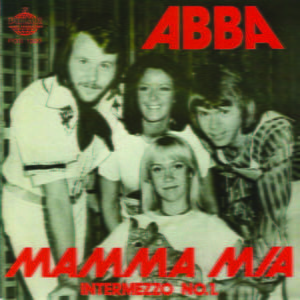
34 MAMMA MIA, 1975
The song that named a musical has come to symbolise the huge ongoing appeal of ABBA. Taken from 1975’s ABBA album, it was the band’s second UK No. 1 and established the outfit as a successful pop act in their own right. Mamma Mia! the musical is a standalone story not based on the song, of a girl who invites the three men who might be her father to her wedding on a Greek island. It debuted as a stage production on 6 April 1999 and is still running in theatres, having played to 50 million theatregoers. Then, in 2008, it was made into a movie. Benny and Björn are credited as executive producers of the film and re-recorded their songs at Metronome Studios in Stockholm, with the cast supplying their own vocals.
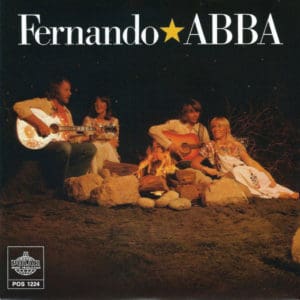
33 FERNANDO, 1976
Originally a Frida solo track from her 1975 Frida Ensam (Frida Alone) album that had only been released in Scandinavia. Written by Benny, Björn and Stig, Fernando had been recorded at the same time as ABBA’s Dancing Queen sessions. The popularity of Fernando in Sweden quickly persuaded the group to turn the track into an ABBA release and it became the band’s third UK No. 1 in March 1976. The Swedish lyrics had been written by Stig, but Björn stepped in for the English language version and turned the song from a standard love ballad into a conversation between two former Mexican revolutionaries sitting outside reminiscing – a theme that ABBA reprised for the video, with the quartet sitting around a campfire playing acoustic guitars.
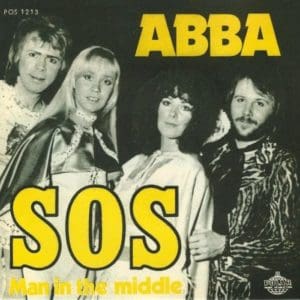
32 SOS, 1975
The recording sessions for SOS started at the end of August 1974 under the working title of Turn Me On. With Agnetha on lead vocals, SOS was the third single taken from the ABBA album. It was the song that returned the quartet to the Top 10 and gave them an appearance on Top Of The Pops, something that virtually guaranteed a hit. SOS eventually peaked at No. 6 in October 1975 and remained in the charts for two months. It also took off in the US, making the Top 20. It was now obvious that ABBA were substantially more than a Eurovision one-off and, in September 1975, they undertook their first US promotional trip, spending two weeks making TV appearances and talking to journalists.
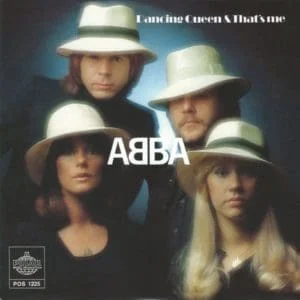
31 DANCING QUEEN, 1976
Issued as a taster for the Arrival album, Dancing Queen was ABBA’s third chart topper in a row, hitting No. 1 a mere two weeks after release, staying there for six weeks and selling 850,000 copies in the UK. Released in the US in early 1977, it was the first ABBA single to top the American charts. Originally titled Boogaloo, the song draws on the dance rhythms of the time, including George McCrae’s Rock Your Baby and the New Orleans-flavoured drumming on Dr John’s 1972 album, Dr. John’s Gumbo. To leave listeners in no doubt that this was definitely a track to strut your funky stuff to, Stig came up with the Dancing Queen title and the song’s original lyrics, which Björn later modified.
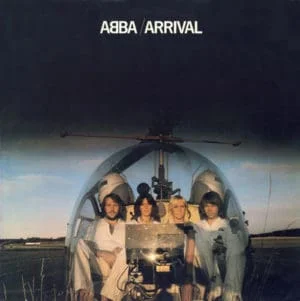
30 TIGER, 1976
For part of ABBA’s short international touring career, Tiger, from the Arrival album, was the up-tempo ‘get ’em going’ song they came on to. In ABBA: The Movie, the quartet are standing at the side of the stage; Frida does a few vocal warm-up exercises; the extended intro starts to play and helicopter sounds that nod to the Arrival cover echo round the stadium. The four run on, throw off the long glittery cloaks they’re wearing and launch into Tiger. The Lasse Hallström promo video draws on the song’s lyrical theme of the city at night being a dangerous place and shows Agnetha and Frida doing their best to look streetwise in denim and bandanas as they drive around a bustling city, while Benny and Björn sit passively in the back looking bored.
Read more: Making ABBA’s Arrival
29 WHY DID IT HAVE TO BE ME?, 1976
One of the songs that Benny and Björn brought into Metronome Studios in April 1976 for the Arrival album was a piano-and-sax boogie-woogie number called Why Did It Have To Be Me. Novel pedal steel and crashing waves sound effects were then added, and Stig Anderson came up with lyrics about a girl going to Hawaii to forget the lover who’s jilted her; Frida and Agnetha recorded a joint lead vocal, the song was renamed Happy Hawaii and mixed. As the Arrival sessions drew to a close, the Fats Domino treatment was revived – although the Happy Hawaii version with Beach Boy-esque backing vocals also saw release as the B-side of Knowing Me, Knowing You.

28 DUM DUM DIDDLE, 1976
Frida’s sexy Norwegian accent on lines like: “You’re only smileen, when you play your violeen. Wish I was Dum Dum Deedle, Your darling feedle!” and the sheer bonkers subject matter peg this Arrival track as a classic piece of ABBA kitsch – Eurovision done right. Dum Dum Diddle was later dismissed by both Frida (“A silly song – I don’t like it!”) and Björn (“It might as well have been Dumb Dumb Diddle!”). A drunken Björn had written the words (so he later admitted) at five o’clock in the morning with a recording session looming. The idea of a woman wanting to replace a violin as the object of her lover’s affections undeniably ranks as one of ABBA’s more unusual lyrical concepts.
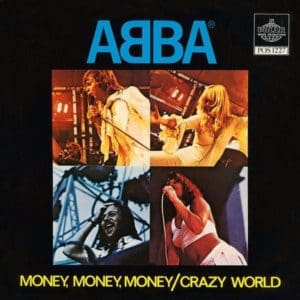
27 MONEY, MONEY, MONEY, 1976
Probably ABBA’s most theatrical number, Money, Money, Money underwent several lyrical concept changes before reverting back to the original. On the premise that songs about cash were (literally) ten-a-penny, Björn ditched his original idea and title of Money, Money, Money in favour of new lyrics based around a gypsy girl. Ultimately deciding this didn’t work, the Money, Money, Money idea was reinstated. Benny and Björn wanted to write a musical and often crafted songs that could work within a dramatic context. Melodramatically sung by Frida, Money, Money, Money wasn’t released as a single in the US, on the grounds of being more European than American.
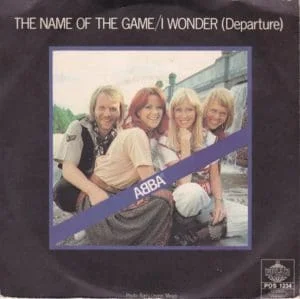
26 THE NAME OF THE GAME, 1977
Over their nine-year recording career, ABBA proved themselves masters of many musical styles. The Name Of The Game demonstrates that in addition to impassioned ballads and full-on Europop, they could also do restraint and subtlety. Recording sessions started on 31 May 1977 of a song initially called A Bit Of Myself, laying down bass and synthesiser refrains. The rest of the song was then developed as a six-part structure, with Frida and Agnetha adding solo and harmonised sections. Benny provided exotic synthesiser effects, including a piccolo-trumpet sound. Stig Anderson suggested The Name Of The Game as a title, which Björn then built his lyrics around.
Read more: Making ABBA: The Album
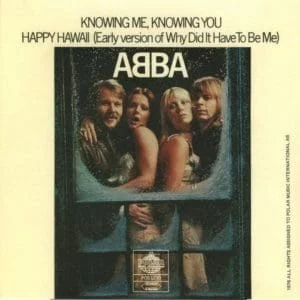
25 KNOWING ME, KNOWING YOU, 1977
Despite being recorded on 23 March 1976, Knowing Me Knowing You wasn’t released as a single until 16 February 1977, demonstrating how confident ABBA were in the other songs they had ready to go. The number was the first track recorded for the Arrival album and spent five weeks at No. 1 in April 1977. Stig suggested the title, but Björn mapped out the lyrical journey into heartbreak, where a couple realise that: “There is nothing we can do. This time we’re through.” The simple but effective Lasse Hallström promo has the four band members singing while facing each other and then turning away when a new line is sung. The conclusion, with Agnetha and Frida sadly walking away from Benny and Björn in the thick Swedish snow, help make the promo one of pop’s most iconic videos.
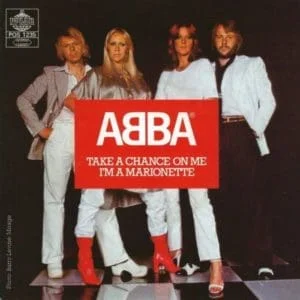
24 TAKE A CHANCE ON ME, 1978
From the a cappella vocals at the start of the track onwards, Take A Chance On Me is a classic pop song, where the singer is asking a prospective beau to throw caution to the wind and ‘take a chance’. It cuts to the chase immediately, as many of ABBA’s songs do, especially after Björn began writing the lyrics on his own without Stig. And while the collaboration between Benny and Björn was never entirely cut and dried, since Björn wrote most of the lyrics and Benny was the prime musical force, it was probably Andersson who came up with one of ABBA’s prime signature touches of having an instrument ‘talk back’ to the vocal as here, when the ‘It’s magic’ line is followed by a piece of ‘magical’ synthesiser swagger.
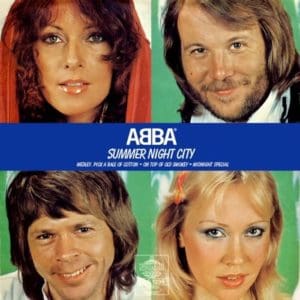
23 SUMMER NIGHT CITY, 1978
ABBA opened their own state-of-the-art recording studio in Stockholm in May 1978. The first song to be worked on at Polar Studios over an initial backing track recorded at Metronome Studio was the disco-influenced Summer Night City. Benny, Björn and Michael B Tretow spent a week trying to get a mix they were satisfied with, without success. Ultimately, a mix was chosen that removed the 45-second vocal, string and piano introductory section which gave the track more immediacy (although this was reinstated when ABBA played the song live on their 1979 world tour). To Tretow’s ears, the edit was glaringly obvious. Björn later remarked that the recording was lousy and shouldn’t have been released. The public didn’t agree and Summer Night City charted at No. 5 in September 1978.
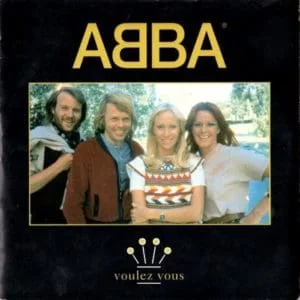
22 VOULEZ-VOUS, 1979
Always evolving musically, Voulez-Vous, ABBA’s sixth album, saw the group experimenting with funk and disco. Many songs are set to a dance beat and are longer than usual. In the Bahamas in February 1979, writing and preparing songs for the next album, Benny and Björn had access to all sorts of music not generally available in Sweden. Inspired enough by what they heard to write Voulez-Vous and Kisses Of Fire, the duo flew across to Miami and booked themselves into Criteria Studios, where the Bee Gees had made many of their mid-70s hits. They laid down a basic track for Voulez-Vous which was taken back to Sweden and completed. It was backed with Angeleyes, another dance-influenced track.
Read more: Making ABBA’s Voulez-Vous
21 IF IT WASN’T FOR THE NIGHTS, 1979
Engineer Michael Tretow was flown over from Sweden to Miami to make sure whatever was done at Criteria would be compatible with the equipment at Polar Studios. Working alongside producer Tom Dowd were disco band Foxy supplying the backing. In addition to Voulez-Vous, a new version of If It Wasn’t For The Nights was tried but didn’t work – Benny later recalled: “The song has so many peculiar chord changes in the verse, it made it hard for them to get into the groove like they were used to.” Live shows around this time started with Voulez-Vous and segued straight into If It Wasn’t For The Nights, proving ABBA could write and perform disco as well as anyone.
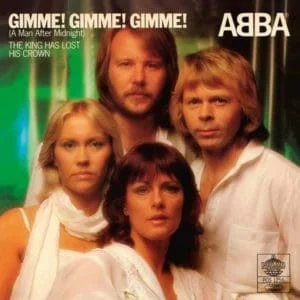
20 GIMME! GIMME! GIMME! (A MAN AFTER MIDNIGHT), 1979
The follow-up single to Voulez-Vous was originally going to be Rubber Ball Man (also known as Under My Sun). The song only made it to demo stage and Gimme! Gimme! Gimme! (A Man After Midnight) issued instead. With its disco bass and drums, the song was more in keeping with the dance tracks that ABBA were making in 1979. Sung by Agnetha, the slightly risqué lyrics spin the story of a lonely woman desiring romance to lighten up her late nights. An up-tempo, catchy calling card for the band’s forthcoming world tour, it was edited down to 3.36 for North America, as its 4.46 duration was too long for daytime radio.
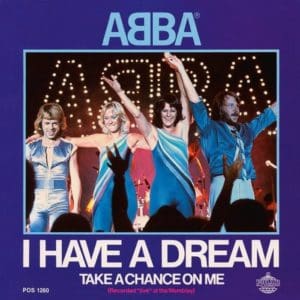
19 I HAVE A DREAM, 1979
In major contrast to the brisk disco rhythms of most of the rest of the Voulez-Vous album, I Have A Dream is probably the most sickly sweet song ABBA ever recorded. It’s also the only ABBA track to feature vocalists from outside the band, when a children’s choir from the International School Of Stockholm join in for the final chorus. As 1979 was UNICEF’s Year Of The Child, ABBA would bring on stage a children’s choir from each city visited on their world tour to sing I Have A Dream with the group. As the band later admitted, the results were variable – but the kids’ choirs sometimes also stuck around for Thank You For The Music, confirming ABBA in concert was a family show rather than a rock gig.
18 CHIQUITITA, 1979
Chiquitita is one of the very few occasions ABBA repeated themselves. The number borrows heavily from the earlier Fernando and, as a ballad, sticks out from the rest of the Voulez-Vous album. In The Arms Of Rosalita, an earlier version of the song, had been even slower, with vocals shared by Agnetha and Frida. An interim, lyrically different version of the song called Chiquitita Angelina was also recorded but discarded. Chiquitita is faster and Fältskog dominates the individual sections. With all publishing royalties going to UNICEF, the song was premiered in 1979 at a benefit in New York as part of the International Year Of The Child, with ABBA on the same bill as the Bee Gees, Earth Wind And Fire and Rod Stewart.
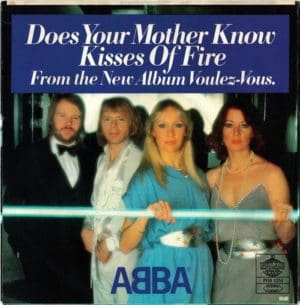
17 DOES YOUR MOTHER KNOW, 1979
Getting to No. 4 in the UK charts and later covered by REM, the release of Does Your Mother Know as a single shows a band supremely confident about what they were doing and the guarantee of success for virtually anything they released. Rather than feature a lead vocal by Agnetha or Frida, probably among the world’s most vocally recognisable singers, Does Your Mother Know has Björn (at best an average vocalist) on his only 45RPM lead vocal, singing about having the hots for a female a lot younger. “Take it easy. That’s no way to go”, he concludes; Frida and Agnetha join in with classic harmonies for a middle eight lifted from the band’s unreleased Dream World song.
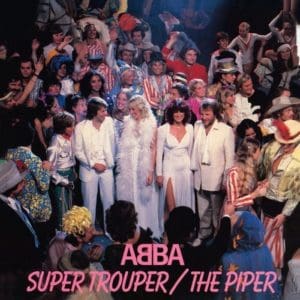
16 SUPER TROUPER, 1980
Their ninth UK No. 1 and title song of ABBA’s seventh album is self-assured but accessible pop music. With a lead vocal from Anni-Frid, the song tells of the trials and tribulations of being in a band on the road and stage with a Super Trouper being the nickname of the hefty spotlights that ABBA were lit up by at their stadium gigs. The namecheck for Glasgow was suggested by Howard Huntridge of Bocu Music, ABBA’s UK publishers. The video and record sleeves feature circus performers – art director Rune Söderqvist and photographer Lars Larsson initially considered Piccadilly Circus, but this was soon ruled out and the Europa Film Studios in Stockholm and a circus were booked instead.
Read more: Making ABBA’s Super Trouper
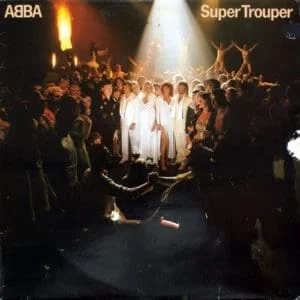
15 ME AND I, 1980
The closing track on Side 1 of the Super Trouper album, Me And I is a prime cut of Europop, with Frida’s commanding lead vocals riding over a powerful Benny Andersson synth-dominated track. Michael B Tretow, who engineered the majority of ABBA’s output, would often multitrack the backing vocals, but then vary the tape speed at successive passes to create a shimmering effect which is present here. Frida’s vocals are slightly higher than normal, with occasional syllables running together, indicating that the main vocals have also been sped up. Björn Ulvaeus’ lyrics tell the story of an internal battle within a split personality – quite a progression from “digging the dancing queen”.
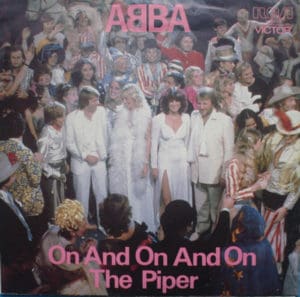
14 THE PIPER, 1980
With Agnetha, Frida and Michael Tretow in Stockholm working on the Spanish album, Benny and Björn adjourned to Barbados to write songs for Super Trouper, with the thought of making a part of it a trial run for the musical the duo had been hankering to write. Björn had started his career in The Hootenanny Singers, a Swedish folk group, and The Piper has folk-styled medieval-sounding music complete with flutes, jigs and military drumming. It’s rescued from novelty hell by the vocals of Frida and Agnetha. Ulvaeus’s lyrics refer to the Pied Piper legend and the fear that in the future, a fascist leader might be able to rise again, an idea inspired by Stephen King’s 1978 novel, The Stand.
Read more: Top 20 Reunion Albums
13 HAPPY NEW YEAR, 1980
Very squarely set in 1979, as the lyrics tell us: “It’s the end of a decade. In another 10 years’ time, who can say what we’ll find… at the end of ’89?” The opener of Side 2 of the Super Trouper album was written by Benny and Björn while in Barbados. They’d met comedian John Cleese and discussed the possibility of writing a musical together. Happy New Year was intended to play a significant part in the production, which was to be based around the characters looking back over the previous year and speculating about the future. Cleese ultimately backed out and Benny and Björn put the idea on hold, but kept the central song – a maudlin ballad with a great chorus.
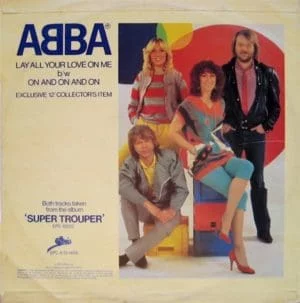
12 LAY ALL YOUR LOVE ON ME, 1981
Two tracks from the Super Trouper album were given the full-on dancefloor treatment. Rather than put one or both out as singles, it was decided to package them together and make the record available only in the format of choice of club and dance DJs – the 12-inch single. Both On And On And On and Lay All Your Love On Me had been remixed with great success and had topped the US dance and club chart. July 1981 saw the two remixes packaged up together and issued as a 12-inch-only release. The ‘Exclusive 12 inch Collector’s Item’ single peaked at No. 7 and stayed in the chart for close on two months.

11 ON AND ON AND ON, 1980/81
Benny Andersson’s keyboards, sequencers, staccato piano stabs and the poppier end of the industrial European electro of Kraftwerk are all in evidence here, even though On And On And On is one of ABBA’s more rocky numbers. The heavy guitars are almost certainly keyboard-generated and an effective contrast to Agnetha and Frida’s robotic vocals. Benny and Björn had been playing around with the duo’s vocals for years and carried on doing so until the end. ABBA were never ashamed of borrowing riffs or musical styles from different sources (including themselves!) and On And On And On has Benny’s Beach Boys-esque falsetto backing vocals. Beach Boy Mike Love must have heard the homage, as he covered the ABBA song on his Looking Back With Love solo album a year later.

10 OUR LAST SUMMER, 1980
This emotive ballad that has a woman directly addressing a former lover is sung with so much feeling by Anni-Frid that the suspicion is it’s a true story that happened to Frida herself. Not the case: the track from the Super Trouper album is Björn writing about a holiday romance he enjoyed in France as a teenager and references walking along the Seine, sitting in the grass by the Eiffel Tower, Notre Dame and morning croissants. It’s all nicely punctuated, unusually for ABBA, by a great piece of rock guitar courtesy of Lasse Wallander. In the final verse, Frida flips it by saying the ex-lover now works in a bank and watches football, but she still tells him: “You’re the hero of my dreams.”
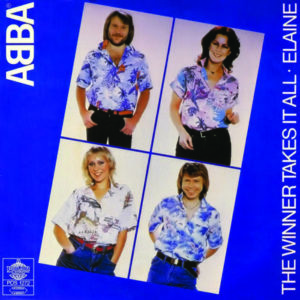
9 THE WINNER TAKES IT ALL, 1980
Often referred to as one of ABBA’s most personal songs, even though, as Björn later confessed, the lyrics came to him in an hour-long rush of creativity when he was drunk one night. Ulvaeus says that the lyric, which refer to a recently ended love that is still causing emotional pain, is “90 per cent fiction”, adding, poignantly: “There were no winners in our divorce.” The video was filmed 10 days after Björn and Agnetha finalised their divorce, has Benny and Frida laughing with Björn while Agnetha sits glumly, lost in thought about days gone by. Because he was filming a movie there, Lasse Hallström shot the video in the small town of Marstrand on the west coast of Sweden.
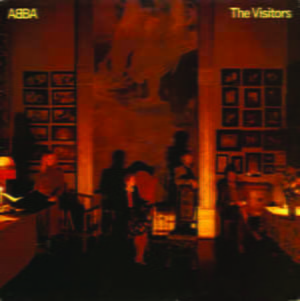
8 THE VISITORS, 1981
The title track of ABBA’s final studio album, where the recording sessions were later described by Benny as an “uphill struggle”. Parts of the album are melancholy and downbeat, reflected in the dimly lit front cover, which has the band members barely acknowledging each other. By this album, Björn had progressed hugely as a lyricist. The title track tells of being a dissident in the Soviet Union and the “secret meetings” (where) “we talked and talked in quiet voices, smiling” and then waited for the ominous ring of the doorbell by “the visitors” – the Secret Police? – who’ve “come to take me”. Benny’s swirling keyboard introduction and Frida’s treated otherworldly vocals are classy ‘pop prog’.
Read more: Making ABBA’s The Visitors
7 SLIPPING THROUGH MY FINGERS, 1981
Taken from The Visitors album with Benny’s keyboards as lead instrument, Slipping Through My Fingers is a slow-paced emotional insight into ABBA’s private lives. With lyrics by Björn and restrained lead vocal from Agnetha, the song is in stark contrast to the heavyweight concept of the album’s title track. Slipping Through My Fingers was inspired by Björn watching their daughter Linda going away to her first day at school and turning round and waving as she did so. Björn and Agnetha acknowledge that Linda is growing up and have mixed feelings, but know that they ultimately need to let go. In common with many parents, Björn later regretted having missed out on some of the magical childhood years when work dominated – predominantly ABBA, of course.
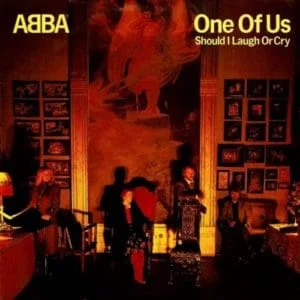
6 ONE OF US, 1981
Among Lasse Hallström’s most memorable ABBA promos, the video for One Of Us gives us a forlorn-looking Agnetha moving into a new flat. Noticeably on her own, she carries in boxes of her possessions which she starts to unpack and arrange with several bizarre modern-art paintings taking pride of place. Hallström’s interpretation of the song could be viewed as the director (and ABBA themselves, who will have had to approve his treatment) playing on the recent personal soap opera happening between Ulvaeus and Fältskog and threatening to overshadow the music. The record-buying public disagreed and One Of Us was a Top Three single in the UK and many other countries, has been covered many times and features in the stage version of Mamma Mia!.
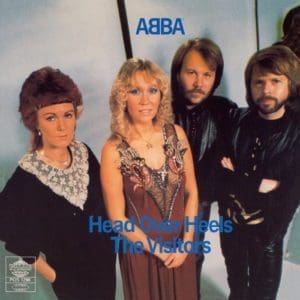
5 HEAD OVER HEELS, 1982
Taken from The Visitors album with a lead vocal by Agnetha, Head Over Heels was ABBA’s poorest-selling UK single in seven years. The band’s run of Top Five singles was over. Musical tastes had changed – New Romantic bands like Duran Duran and Spandau Ballet dominated the charts and the media was always hungry for the Next Big Thing. Head Over Heels (and the video which accompanied it) illustrates the theatrical direction Andersson and Ulvaeus were going in. The song is about a woman who enjoys the material things in life, as rammed home in the promo which shows a worn-out Björn carrying parcels and packages for shopaholic Frida, who then dances round in a series of extravagant outfits while he falls asleep on the settee.
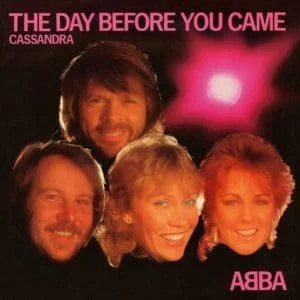
4 THE DAY BEFORE YOU CAME, 1982
The last track (and penultimate original single) that ABBA recorded as a group, with Benny’s keyboards providing all the instrumentation. Andersson and Ulvaeus usually came into the studio with finished songs, but on this occasion, Benny only had a small fragment which he started playing. Michael Tretow had the foresight to record everything he was doing and within an hour, Den Lidande Fågeln (The Suffering Bird) had a full melody. The number was a new direction for ABBA, with no chorus and sequencers replacing Benny’s usual majestic chords. Björn made a list of everyday things that somebody leading an ordinary existence would go about doing before “The day before you came”. Agnetha was then instructed to sing the lyrics in a disinterested way, to emphasise the routine aspect of the narrator’s life.
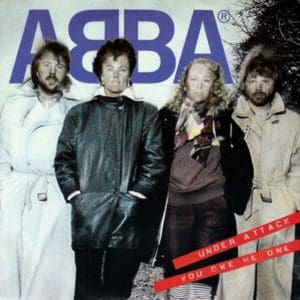
3 UNDER ATTACK, 1982
Under Attack was ABBA’s 28th and last original UK single. The group started work on what was initially intended as a new studio album in early August. This was abandoned in favour of a double album of ABBA hits, called The Singles: The First Ten Years which included Under Attack and The Day Before You Came from the autumn sessions. Under Attack underachieved, only reaching No. 26 in the UK charts and barely scraping into the Top 100 in Australia, previously an ABBA stronghold. The video for Under Attack was shot in a warehouse to a backdrop of revolving red lights, dry ice and running up and down staircases. In keeping with the serious tone of the song, the video concludes with Agnetha, Frida, Benny and Björn with their backs to the camera walking out of the warehouse and into the daylight. Symbolic?

2 YOU OWE ME ONE, 1982
Following the difficult sessions for The Visitors album, Benny and Björn returned to Polar Studios in May 1982 and eventually recorded several songs for an album to be issued later in the year that never materialised. One of these was You Owe Me One, which showed an ABBA uncertain of their place in contemporary music by returning to their ‘schlager’ roots, which brought huge international success in the mid-1970s. The multilayered song pops like crazy, with Agnetha and Frida sharing joint (slightly speeded up) lead vocals. You Owe Me One may be ABBA-by-numbers, but the group’s knack for making ultra-catchy pop records hadn’t deserted them. The number ultimately surfaced as the B-side of Under Attack, and as a bonus track on the 1997 remastered edition of The Visitors.
Read more: The story of ABBA: The Movie
What’s the best ABBA song?
1 THANK YOU FOR THE MUSIC, 1983
Issued as a single in November 1983, a year after Under Attack and when, to all intents and purposes, ABBA were no more, Thank You For The Music (which could be considered an epitaph for the band) only made No. 33 in the UK. It was originally part of The Girl With The Golden Hair, the ‘mini musical’ that concluded Side Two of 1977’s ABBA: The Album. Björn and Benny used the 1977 tour to try it out as a show-closer in front of their huge live audience. Lasting only 25 minutes, The Girl With The Golden Hair revolves around a girl leaving her small town in search of fame. The full musical remained unproduced, but Thank You For The Music became a classic track.
Honorary mentions –
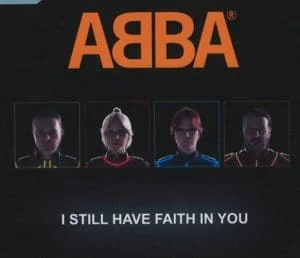
I Still Have Faith In You, 2021
ABBA’s comeback single came out too late to make our list, but we think it deserves an honorary mention. I Still Have Faith In You feels so classically ABBA, it’s somehow feels like a lost song from the late 70s. The video gained an amazing 4.4 million views in the first 24 hours following its release. That’s truly staggering!
Enjoy our feature on the best ABBA songs? Then read our article on ABBA’s albums
Check out ABBA’s official website here
Want more from Classic Pop magazine? Get a free digital issue when you sign up to our newsletter!
